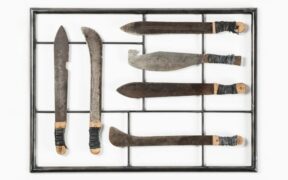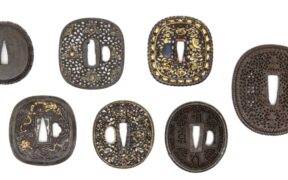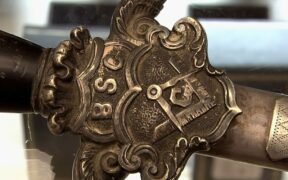Our content features commercial links to our products, committed to transparent, unbiased, and informed editorial recommendations. Learn More
What are Ceremonial Swords? Types and Characteristics
NO AI USED This Article has been written and edited by our team with no help of the AI
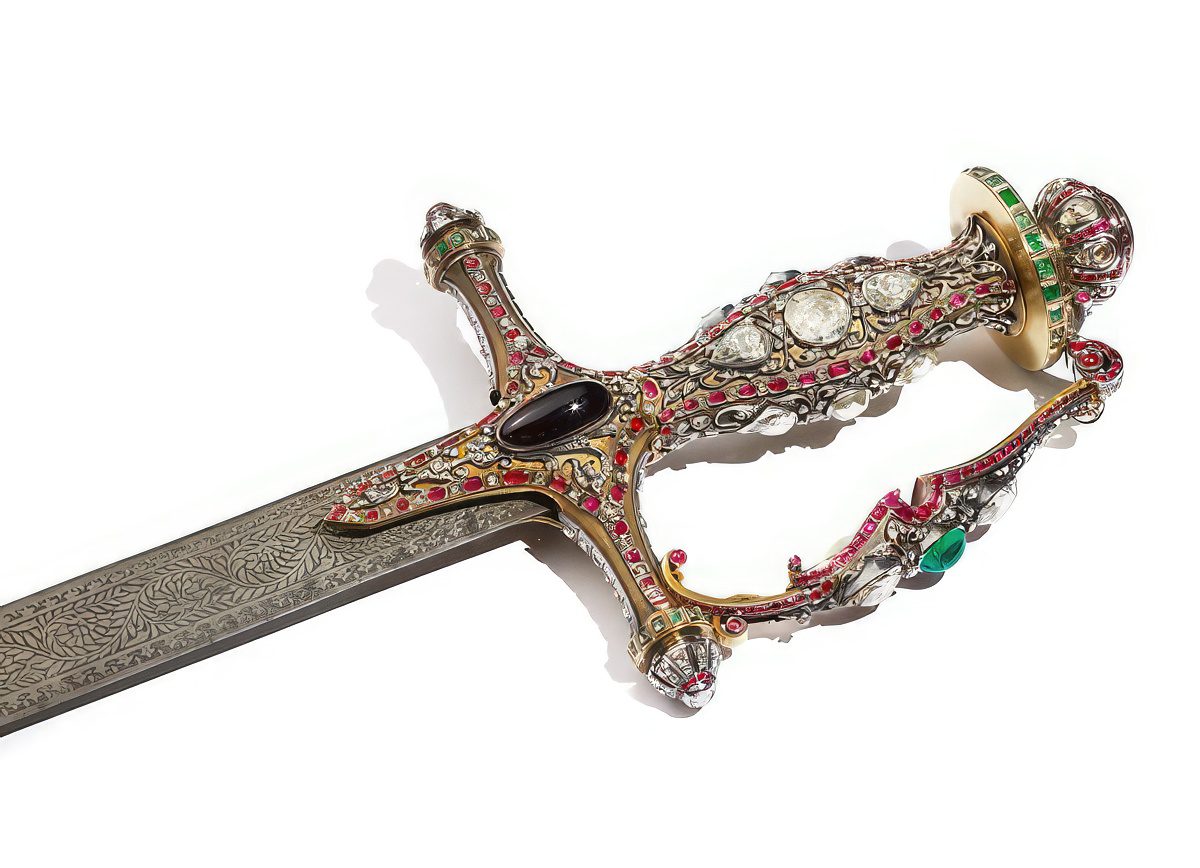
Swords were not only used for fighting but also performed ceremonial roles. Some of them were part of ceremonial regalia while others served as diplomatic gifts or ritual swords. Ceremonial swords also reflect the best works of the armorers, goldsmiths, and artisans of the time.
Let’s explore the various types of ceremonial swords, their functions, and how to tell them apart from fighting weapons.
Types and Uses of Ceremonial Swords
Ceremonial swords have a long history, symbolizing status, power, authority, and wealth. By the early 20th century, most of the world had discarded swords as combat weapons, and swords were confined mainly to officers’ dress uniforms.
1. Ceremonial Court Sword

Some ceremonial swords were worn with formal court dress. Among them were the Japanese kazaridachi of the Heian period. It was worn by high-ranking nobles who were allowed by the emperor to wear a sword at court ceremonies. By the Edo period, the itomaki no tachi (糸巻太刀), a silk-wrapped tachi, was worn mainly ceremoniously with the formal dress called reifuku (礼服).
2. Ceremonial Military Sword
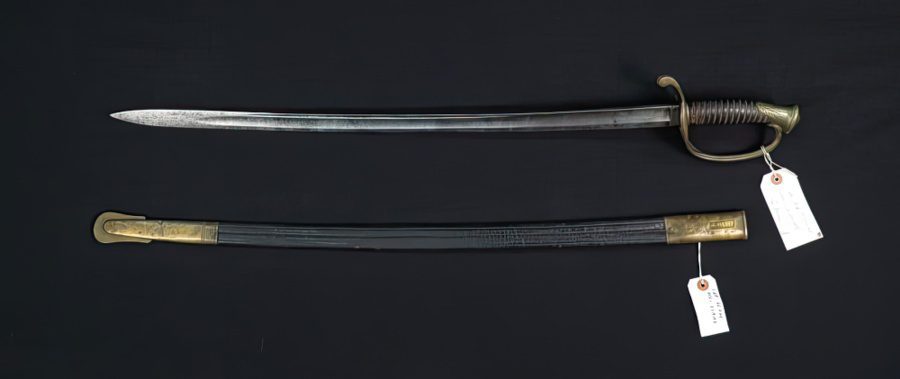
When swords lost their practical function on the battlefield, they remained as symbols of rank and a standard part of officers’ dress uniforms. In the United States Marine Corps, the NCO and the Mameluke swords are designated for ceremonial duty, carried by non-commissioned officers and officers, respectively.
3. Presentation Sword
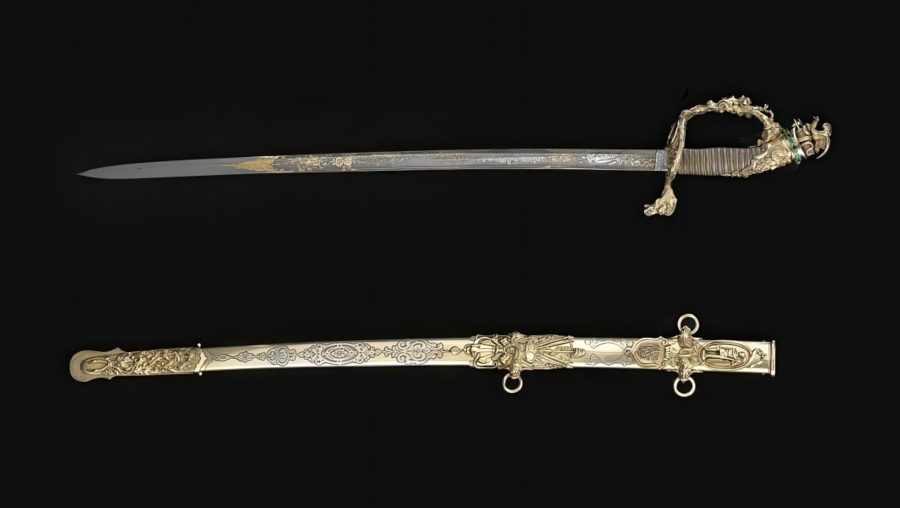
Presentation swords are swords of honor given to military soldiers and important figures for their achievements in war. These swords were awarded by monarchs, rulers, popes, and private organizations in general. They were designed as purely ceremonial and commemorative objects and could be worn for parades and other formal events.
The tradition of awarding a dress sword, saber, or smallsword became common in the 18th and 19th centuries in France, England, and America. American presentation swords bestowed to military leaders were most popular during the War of 1812 and World War I before it eventually went out of fashion.
4. Bearing Swords
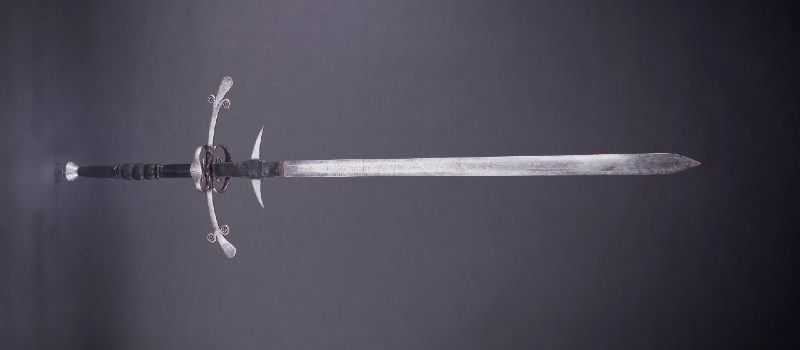
Bearing swords, also parade swords, were carried during processions and various ceremonies to symbolize their owners’ power and authority. They were often oversized swords carried by a servant for his owner.
Bearing swords were often longer and heavier than their fighting versions and had little to no use as a weapon. In Germany, many two-handed swords became bearing swords when they were no longer used in battle and continued to be made afterward to fulfill their ceremonial role.
5. Coronation Sword
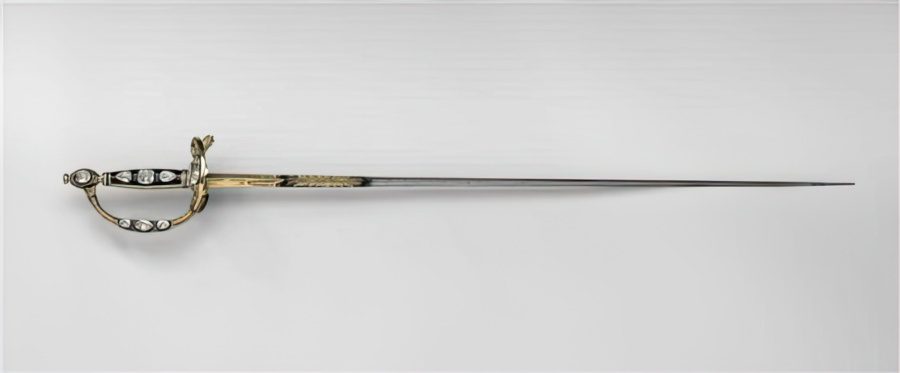
A coronation sword is worn by a sovereign at his coronation, symbolizing the monarch’s authority and commitment to his people and the realm. Despite its ceremonial use, it had to retain the appearance of an actual weapon while having a luxurious design fit for a monarch. Coronation swords remain part of the coronation regalia of some countries, especially the United Kingdom.
6. Papal Sword

A papal sword is awarded by popes to princes and military leaders for defending Christianity. It reflects the political and historical relations between the papacy and European rulers. On rare occasions, it was presented to the whole nation rather than to an individual.
Scotland’s Sword of State was a papal gift to King James IV for defending Christendom and is part of the Scottish crown jewels. As a papal sword, it is decorated with images of Saint Paul and Saint Peter. Other papal swords also feature the emblem of the pope and religious symbols.
7. Ceremonial Ritual Sword

Some ceremonial swords were widely used in religious rituals in different cultures. Some of these include the ceremonial versions of the Indian Nayar’s sword, probably used in animist spirit worship and dance rituals. By the 19th century, the swords of the Ainu were primarily used in ceremonies to drive away evil spirits.
8. Executioner’s Sword
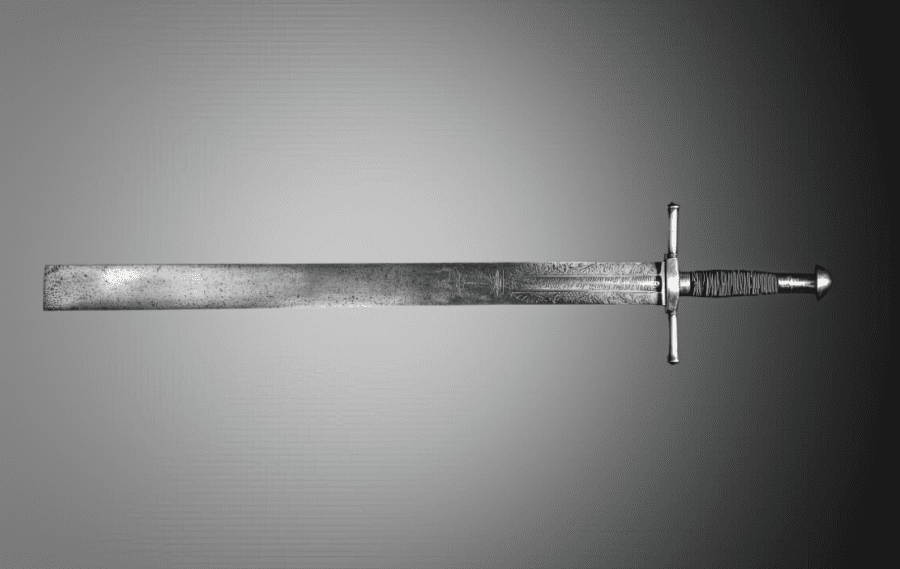
Initially designed for execution, some executioner’s swords continued to be used in processions and ceremonies as symbols of power. In the 17th century, it was widely used in Europe for beheadings and ceased to be used for the purpose by the early 18th century. The sword blade was often decorated with moralistic inscriptions or symbols of justice.
9. Fraternal Society Sword
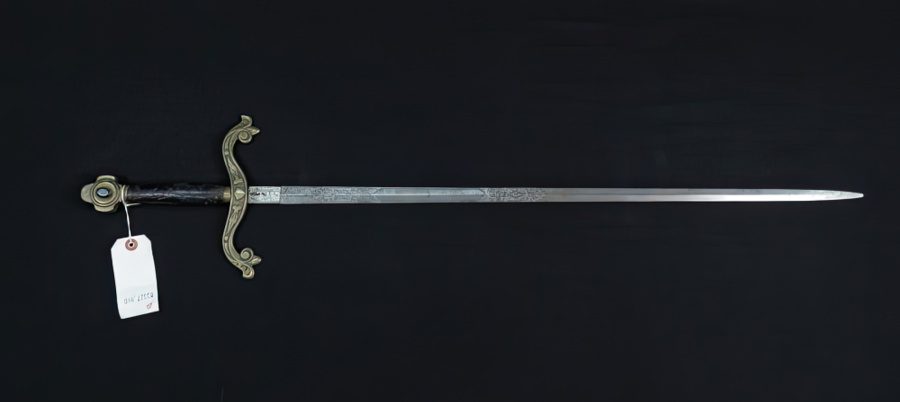
Some fraternal societies also use swords for ceremonial use. The most popular is the Masonic sword of Freemasonry, a fraternal organization that adopted ideas from the Templars of the Crusades. Some of the ceremonial swords of the Freemasons are called Knights Templar sword, after the name of the modern Order of Knights Templar.
Characteristics of Ceremonial Swords
Ceremonial swords are elaborate objects designed by armorers, jewelers, goldsmiths, and artists, making them works of art.
Here are the general characteristics of ceremonial swords:
Metal and Construction
Ceremonial swords tended to have blunt blades unsuited for fighting. A poor-quality blade mounted on an elaborate sword often implies that the weapon was only intended for ceremonial use. However, some also had fully functional blades, especially those designated for ceremonial use after becoming obsolete on the battlefield.
Others were constructed with well-made blades from Toledo, a city known for its high-quality metalwork. Modern-made swords for ceremonial use can also be made from high-carbon steel, though stainless steel is not uncommon.
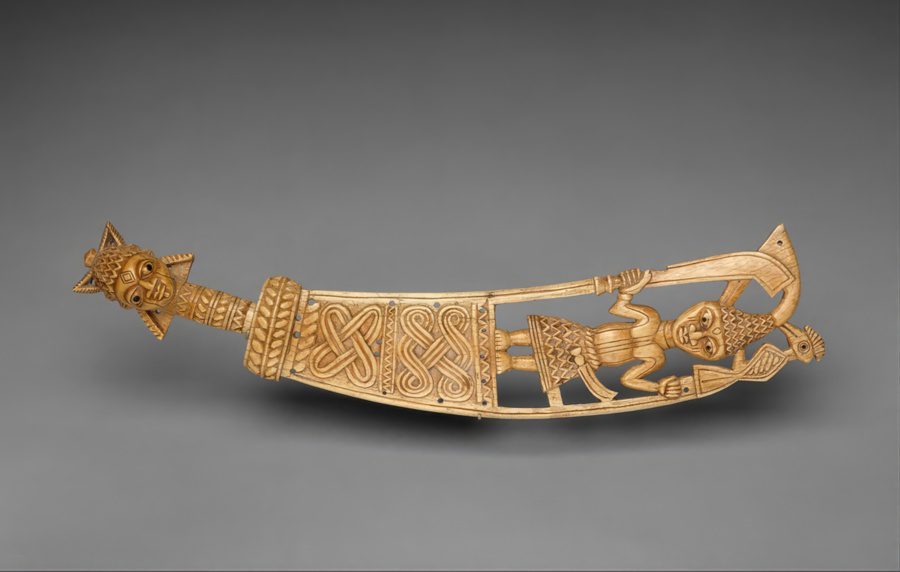
Some ceremonial swords can also be made from ivory or wood. Some examples include the udamalore of the Yoruba people and the Vietnamese ceremonial saber gươm truòng (鎌長).
Blade Appearance
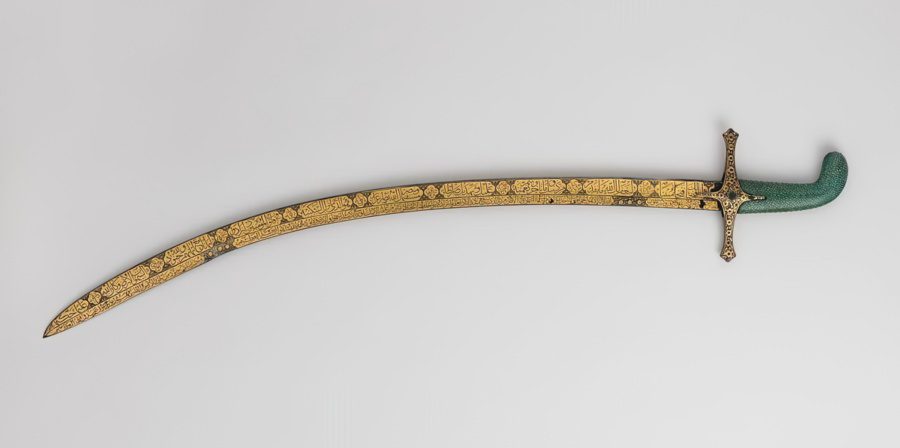
It is common for ceremonial swords and sabres to have extravagantly decorated blades, from etched decoration to engraving, inscriptions, and gold inlays. However, not all swords with decorative carvings have exclusive ceremonial roles as samurai swords such as the katana and wakizashi sometimes feature horimono engraving.
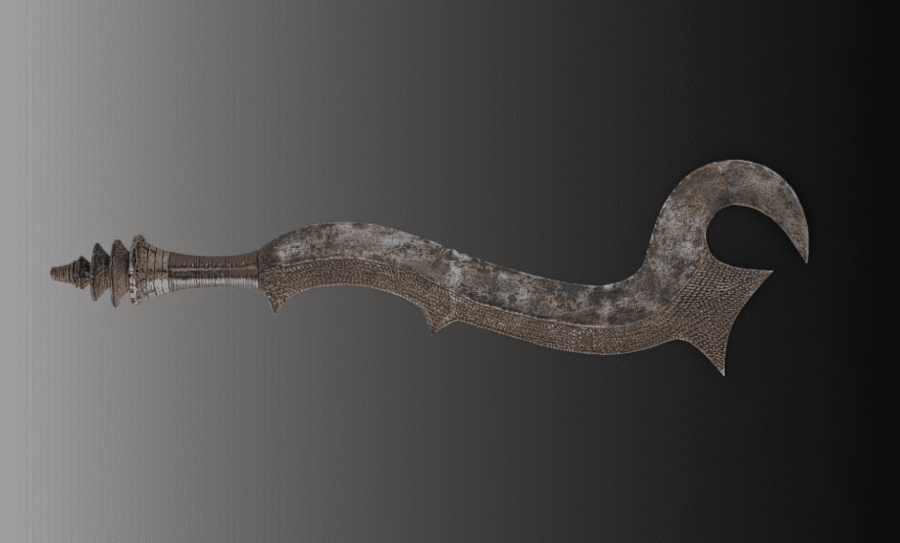
Some ceremonial swords, such as the African ngulu, have complex blade shapes that would be impractical as a weapon. Some blades even featured punched decorations, which would have limited their strength. These were common on the afena swords of the Asante in Africa.
Size and Weight
Many ceremonial swords tended to be longer and heavier than their fighting counterparts. Fighting swords rarely weighed more than 4 lbs. If the sword was too heavy, it most likely served as a ceremonial weapon. The two-handed parade or bearing swords sometimes weighed around 12 to 15 lbs. They were designed only for parades and ceremonial processions.
Sword Mounting Decoration
The high level of decoration on a sword often implies that it had a ceremonial purpose. Ceremonial swords often had fine craftsmanship, inlays, lacquer work, and even gem-setting, some of which were not the most practical for a combat weapon.
Fine Craftsmanship and Elaborate Design
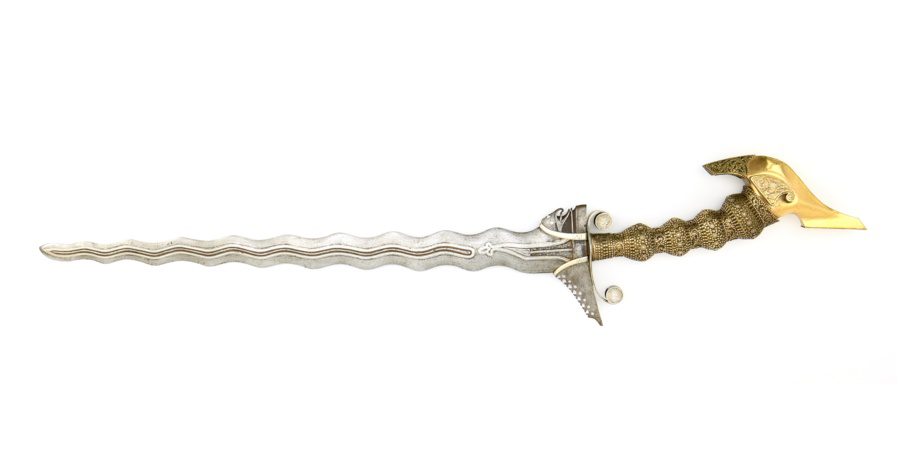
Ceremonial swords often have sculptural and ornate quality, emphasizing their craftsmanship. Viking chieftains would have carried Viking swords with finely crafted hilts for ceremonies. Fine engravings, detailed chasing and chiseling, complex inlays, and highly stylized animal design pommels are also common in ceremonial swords. Still, some fighting swords had ornate handguards.
Precious Metals and Stones
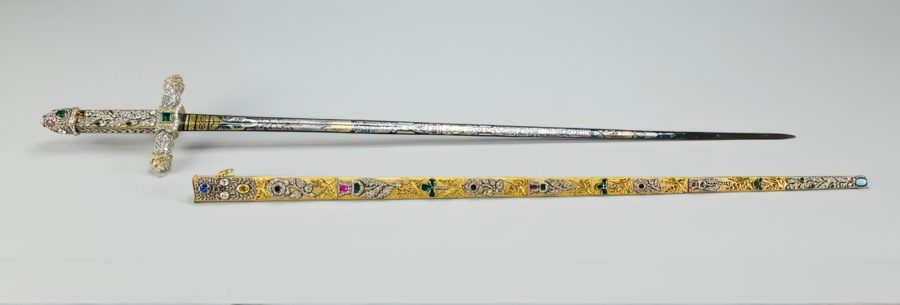
Ceremonial swords have luxurious decorations, from the pommel to the handguard and scabbard. Most coronation swords are set with precious stones such as diamonds, rubies, emeralds, and sapphires. Napoleon’s coronation sword even featured the 141-carat Regent diamond and other diamonds of great value. Jewelers and goldsmiths also use carved cabochon and precious stones on presentation swords.
Coat of Arms and National Emblems
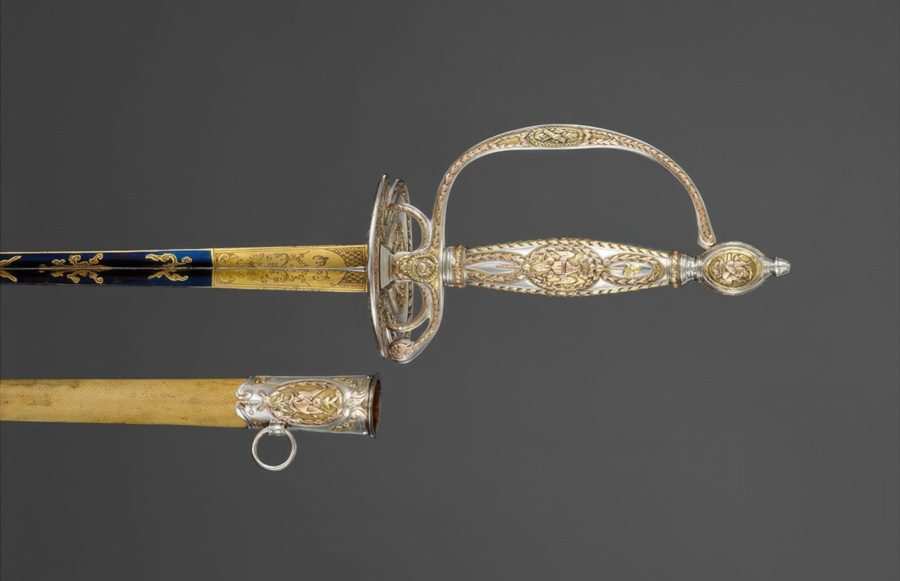
Some ceremonial swords featured coats of arms, such as the presentation swords the Continental Congress awarded to American military leaders. These swords feature the coat of arms of the United States and symbols of American independence. Also, the ceremonial version of the kasthane sword of Sri Lanka features the lion head royal emblem and Sinhalese motifs.
Theme
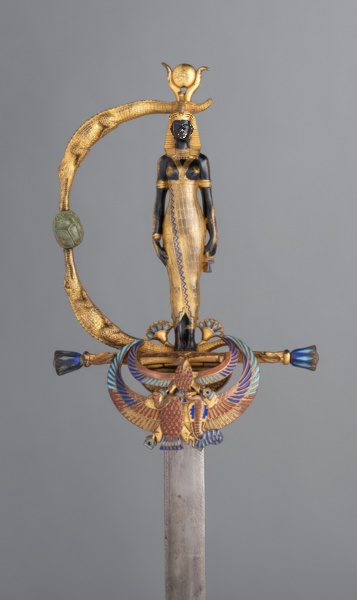
The famous presentation sword honoring the French military officer Jean-Baptiste Marchand is notable for its Egyptian theme. It was designed to honor the soldier’s leadership in Africa for the Congo-Nile Mission. The sculptors and designers drew inspiration from ancient Egyptian religious art and ancient Egyptian jewels.
Conclusion
Ceremonial swords were worn by high officials as part of their ceremonial regalia while others performed symbolic and religious roles. They were the best works of armorers, artists, goldsmiths, and jewelers. Many were finely crafted and elaborately decorated, symbolizing power and wealth.
